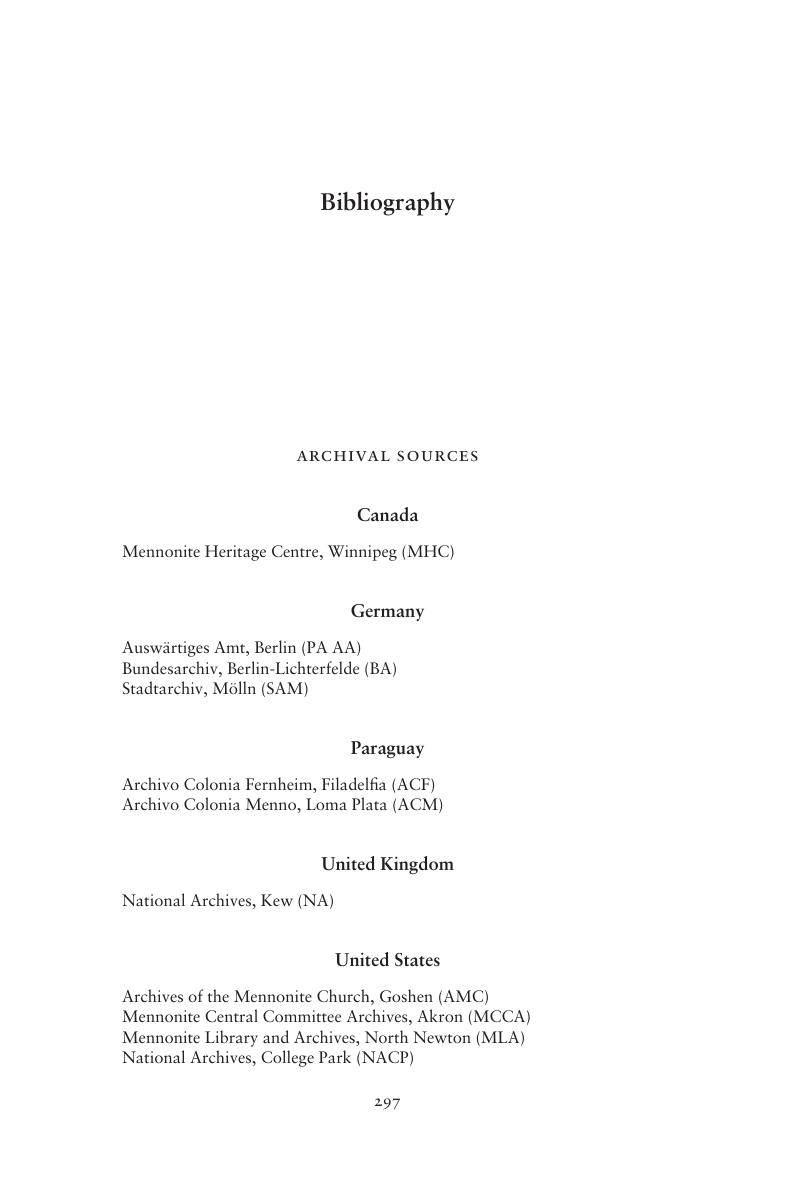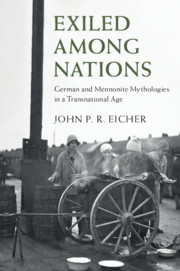Book contents
- Exiled Among Nations
- Publications of the German Historical Institute
- Exiled Among Nations
- Copyright page
- Dedication
- Contents
- Figures
- Maps
- Acknowledgments
- Abbreviations
- Introduction
- 1 No Lasting City (1870–1930)
- 2 A Sort of Homecoming (1929–1931)
- 3 Troubled Tribes in the Promised Land (1930–1939)
- 4 Mennonite (Di)Visions (1930–1939)
- 5 Peanuts for the Führer (1933–1939)
- 6 Centrifugal Fantasies, Centripetal Realities (1939–1945)
- Conclusion
- Bibliography
- Index
- References
Bibliography
Published online by Cambridge University Press: 01 December 2019
- Exiled Among Nations
- Publications of the German Historical Institute
- Exiled Among Nations
- Copyright page
- Dedication
- Contents
- Figures
- Maps
- Acknowledgments
- Abbreviations
- Introduction
- 1 No Lasting City (1870–1930)
- 2 A Sort of Homecoming (1929–1931)
- 3 Troubled Tribes in the Promised Land (1930–1939)
- 4 Mennonite (Di)Visions (1930–1939)
- 5 Peanuts for the Führer (1933–1939)
- 6 Centrifugal Fantasies, Centripetal Realities (1939–1945)
- Conclusion
- Bibliography
- Index
- References
Summary

- Type
- Chapter
- Information
- Exiled Among NationsGerman and Mennonite Mythologies in a Transnational Age, pp. 297 - 318Publisher: Cambridge University PressPrint publication year: 2020



